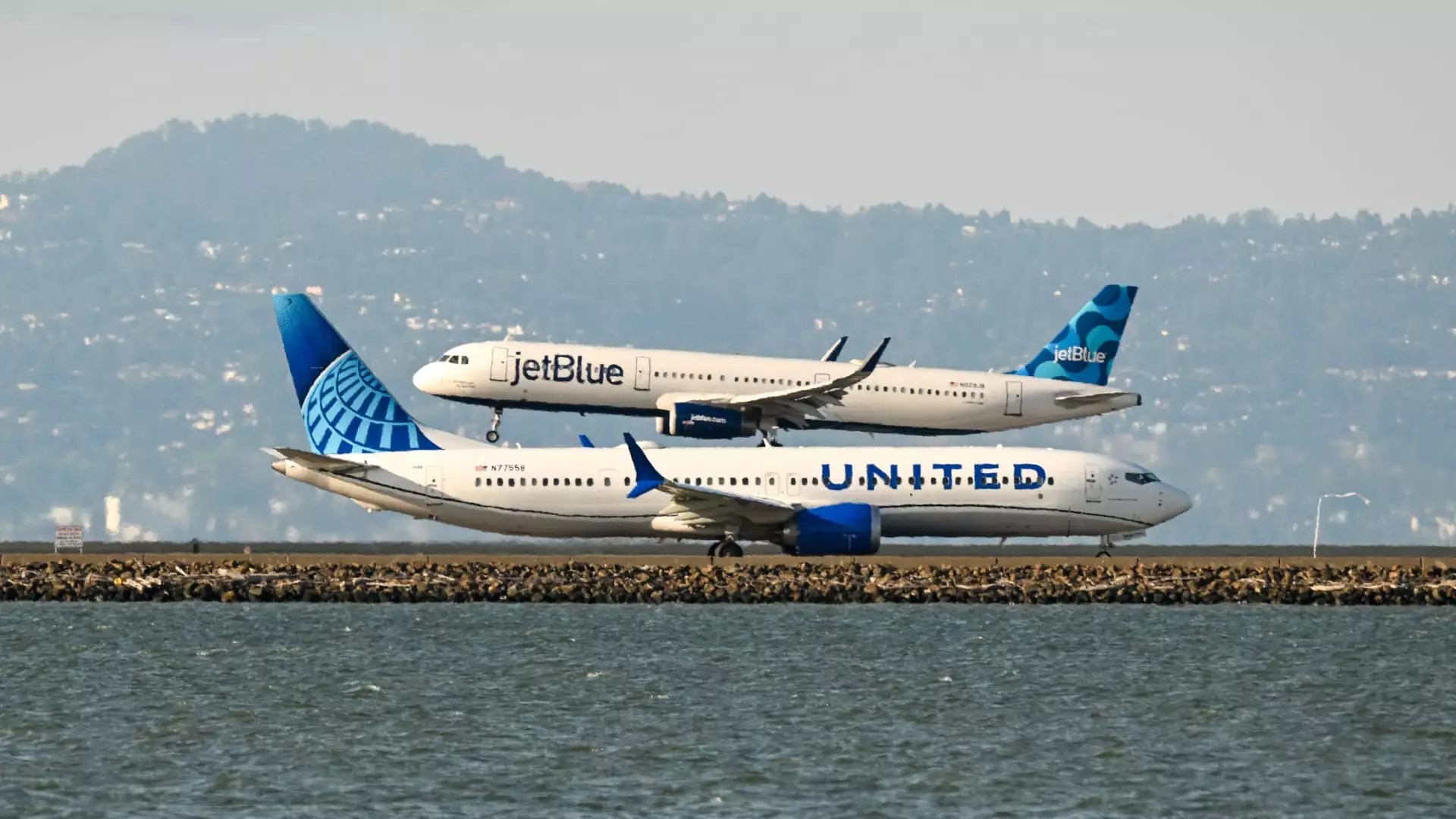United Airlines, once a key player at New York’s JFK Airport, has announced a partnership with JetBlue Airways, aiming to reclaim its previous lost glory. The collaboration, aptly named Blue Sky, represents not just a corporate alliance, but an important shift in how air travel can be improved, especially in a market dominated by bigger carriers like American and Delta. This strategic union comes after United’s awkward exit from JFK in 2015, a move considered misguided by many, including United’s own CEO, Scott Kirby. The implications of this partnership extend beyond mere seat sales; it is an overt attempt to recapture the corporate market share lost during their absence.
Operating up to seven daily flights from JFK by 2027 will grant United an essential foothold within one of the busiest airports in the country. It’s these moves that make airlines competitive, not just at the corporate level but in the eyes of the traveling public. A robust presence at JFK will surely offer a more comprehensive and enticing network, making travel smoother for frequent flyers who often feel constrained by choice and options.
Competing Against Titans
In today’s aviation landscape, smaller carriers like JetBlue face perennial challenges when vying for the same customer base dominated by behemoths like American Airlines and Delta. Therefore, this partnership with United is not just opportunistic but also a strategic necessity. By leveraging their combined strengths, both airlines can better compete on routes that matter most, such as transcontinental journeys.
United’s traditional strengths in international markets allow JetBlue customers access to globe-spanning destinations that they wouldn’t otherwise be able to reach. Conversely, United gains better access to desirable leisure routes in the Caribbean and Florida, which JetBlue has effectively monopolized. It’s a classic win-win, but also a smart adaptation to an industry in constant flux. Rather than merely sitting in a reactive mode, airlines are increasingly understanding that strategic alliances are vital to prosper in a market riddled with unpredictability, economic pressures, and changing consumer preferences.
Additionally, the consumer-focused mindset shared between both airlines presents an opportunity that few partnerships can match. Enhanced loyalty programs and reciprocal mile-earning across both networks could transform the flying experience, essentially making travel easier for consumers. These changes can alter how fare structures work and enhance profitability in ways that previously seemed impossible in a highly fragmented industry.
The Regulatory Hurdles Ahead
The partnership is not without challenges. Regulatory scrutiny will be paramount in determining the acceptance of this regional partnership, especially given the backdrop of previous failed alliances that raised antitrust flags. The short-lived partnership between JetBlue and American Airlines, struck down in 2021, serves as a cautionary tale. The downside of this collaboration could well hinge on its regulatory approval, with antitrust authorities keenly analyzing the dynamics of market competition.
While Kirby and JetBlue CEO Joanna Geraghty paint this collaboration as a bold step forward, one must question how this partnership will withstand the regulatory storm. If it is indeed successful, the industry could witness new standards in cooperation that prioritize consumer choice without stifling competition. Conversely, any legal roadblocks could reinforce the perception that large-scale partnerships are risky propositions, perhaps discouraging similar collaborations in the future.
Looking Forward to 2027
It is a long game until 2027, but the anticipation around United’s renewed appearance at JFK is palpable. This partnership showcases an important evolution in how airlines navigate collaborations for survival. Consumers are asking for more than just low fares; they want strong networks that provide convenient, hassle-free travel options.
What sets this collaboration apart is its commitment not merely to restoring a former presence but to genuinely enhancing the flying experience through agility and innovation. In a market where consumer trust is paramount, how United and JetBlue navigate these challenges will be critical to their long-term success. Their partnership is emblematic of the changes needed in the airline industry, one that needs to adapt continuously or face irrelevance in an age of ever-increasing traveler expectations.


Leave a Reply